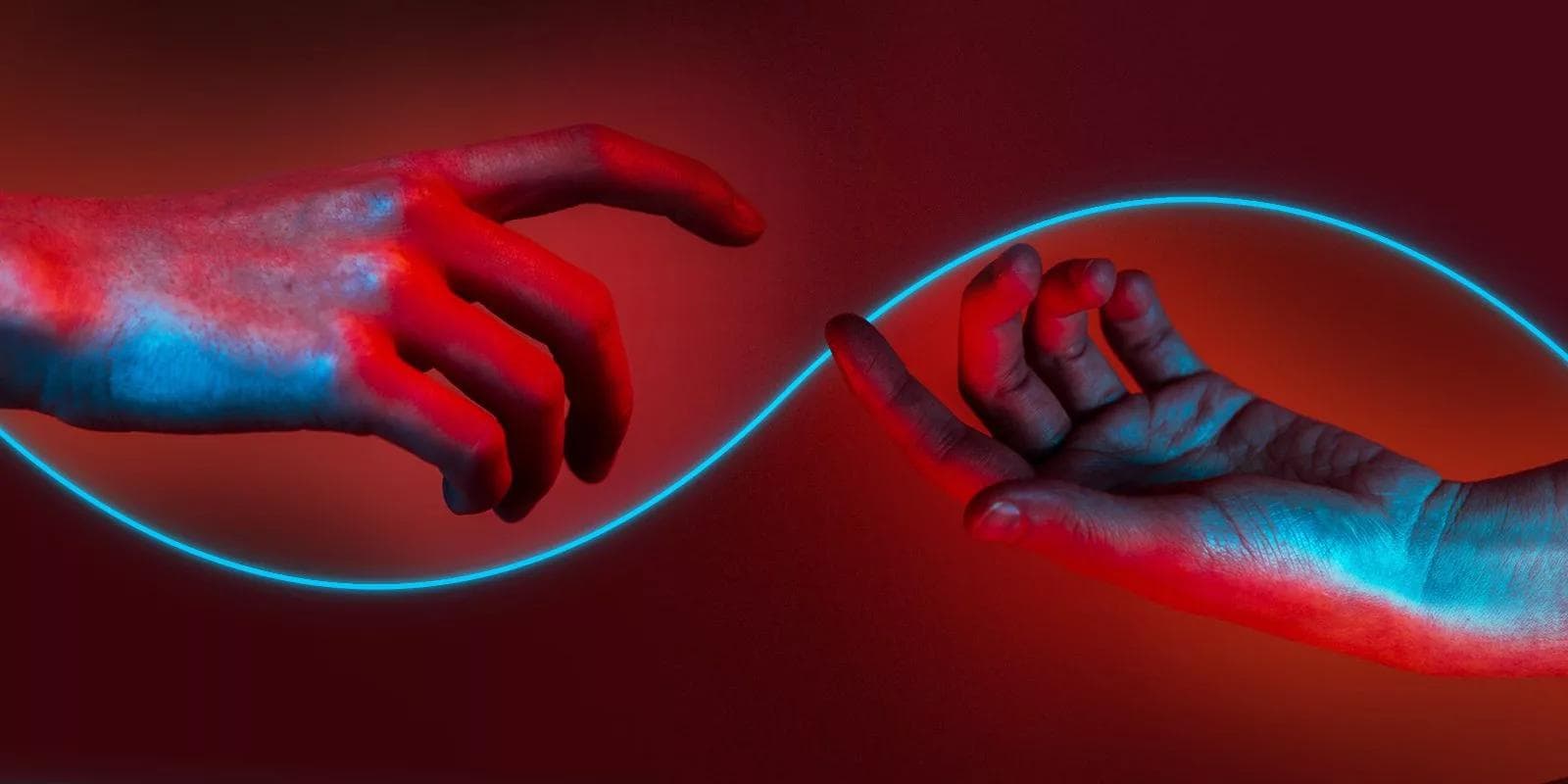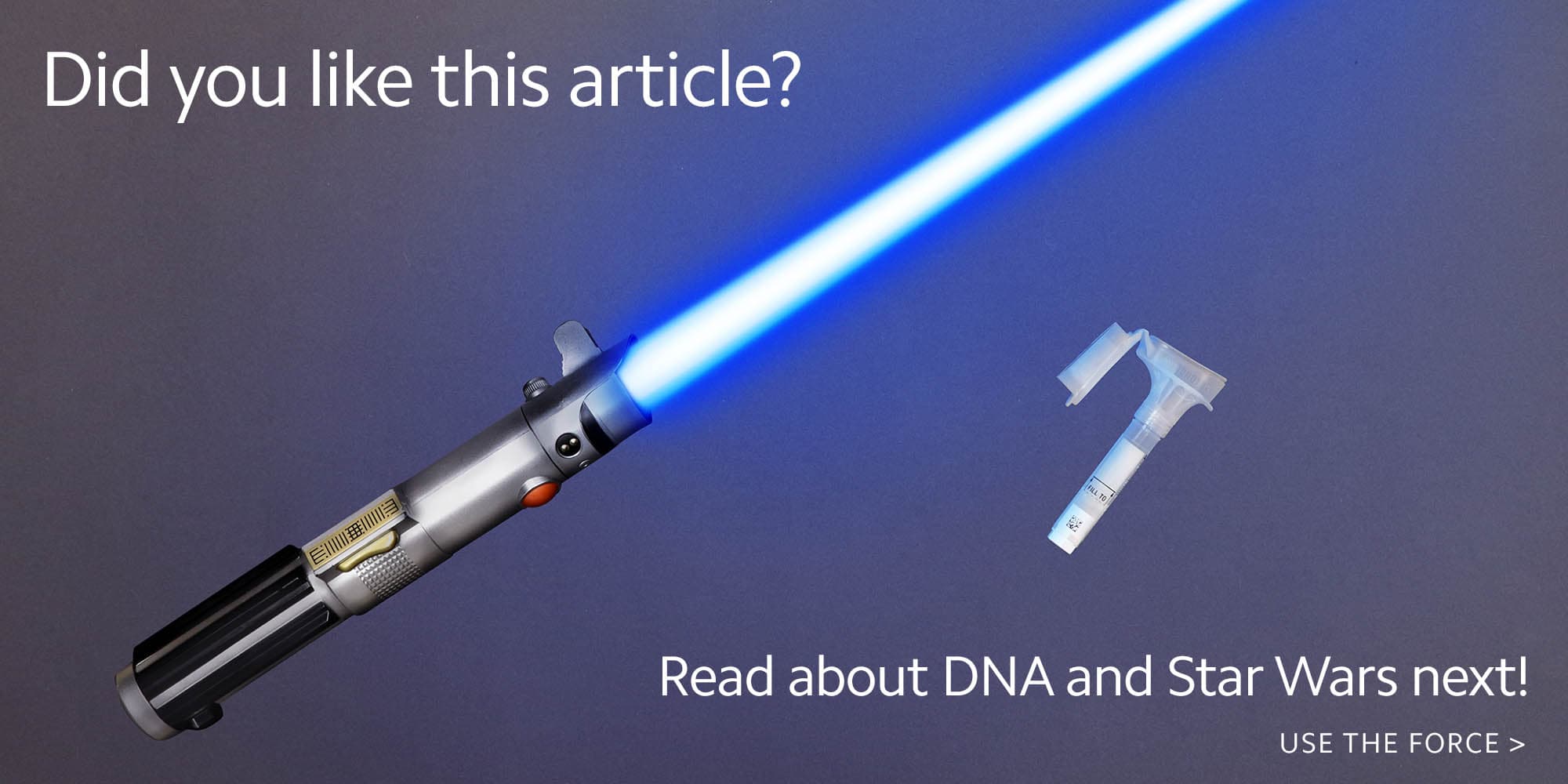Blade Runner’s greatest puzzle

Warning: This article contains spoilers for the original Blade Runner film, but not for Blade Runner 2049.
What does it mean to be human?
Philosophers have spent millennia debating the question. If you’ve seen Blade Runner, you’ve probably given it some thought, too.
The iconic 1982 film, loosely adapted from the Philip K. Dick novel Do Androids Dream of Electric Sheep?, is widely considered one of the greatest sci-fi works in the past half century—not just because it’s a beautifully made picture, but because it strikes at the core of our humanity. In the film’s universe, humans coexist with “replicants,” synthetic beings with superhuman capabilities that are designed to resemble living, organic lifeforms. But just how close are they to humans? What makes humans different?
With Blade Runner 2049 hitting theaters this week—and very likely opening the door to these philosophical questions all over again—we wanted to bring a bioinformatician’s view to the table.
To raise these kinds of big, existential questions, Blade Runner relishes in the blurred lines between humans and replicants. “Is Deckard a replicant?” is one of the great debates from the original film, and the idea is supported by a number of moments throughout. His eyes glow like a replicant’s, for instance. There are also a number of subtle hints that Gaff can see into Deckard’s mind.
How could a human see into a replicant’s mind?
But how could a human see into a replicant’s mind? It’s suggested in the film that there’s at least some DNA involved in the making of a replicant, but perhaps replicants are actually cyborgs—part organic, part machine. If the brain were a computer, it might be visible over some sort of wireless connection, akin to Wi-Fi. Maybe they’re even designed to use this connection to “phone home” to Tyrell Corporation.
For the sake of argument, let’s imagine that replicant brains are, in fact, computers. Let’s also imagine that they use a binary information storage system, as a humanoid robot would be in the real world—that is, the code and data of a replicant brain is built from ones and zeroes (“bits”). Although the coding system can vary, computers use bits in a defined size—8 bits for a byte, for example—to encode information. This enables a huge range of information to be coded: there are 256 potential meanings for a single byte of data, and over four billion for four bytes together. It’s an impressive paradigm that has served computers well since the dawn of the Information Age, particularly considering it only uses two symbols.
As impressive as a computerized cyborg brain might sound, it doesn’t sound very human. In fact, it sounds downright robotic!
Well, not so fast. In a very literal sense of the phrase, human DNA is a medium for encoding data, just as the bits and bytes inside a computer are. While the complete extent of DNA’s role in a cell is complex and not yet fully understood, we do have a reasonably good understanding of DNA’s information storage capabilities. For example, the instructions for building proteins are contained within discrete, 3-unit segments that each code for one of 20 amino acids, the basic building block of a protein. Information within the DNA is read and transmitted to other parts of a cell through the use of RNA. (RNA is similar to DNA, but it’s less stable and not confined to the nucleus or mitochondria.) One RNA string can serve many functions: it can tell a cell how to make multiple different proteins, it can be cut up into short regulatory RNAs, or it can serve both functions at the same time. To put it more simply, the many roles for RNA indicate that DNA has overlapping messages coded within it—one segment of DNA can ultimately code for multiple proteins and regulatory sequences, which are communicated through RNA.
Even if you put this incredible overlapping coding mechanism aside, simply looking at the raw numbers will tell you how powerful DNA can be for information storage. In binary—like a computer would use—you get 256 possible values from a byte of data. That’s not bad. But in DNA, the same number of symbols can make 65,536 possible values. If you string just 30 bases together, you have over 1 quintillion possible values. Considering we have over 3 billion bases in our genome, it’s no wonder every human being is so unique.
This level of complexity is an argument that humans may have vastly more information storage capabilities when compared to the fictional replicants if they do in fact use a binary system. That also explains, in part, why scientists have been hard at work for a long time turning DNA into a viable data storage system for computers—it’s said that a single gram of DNA can store well over a petabyte of data!
So the “code” that underpins humans and replicants could be similar in some respects, and very different in others. One way in which it appears very different is in our ability to evolve. Over hundreds of thousands of years, changes have accumulated in human DNA. The majority of changes have no impact on individuals, but sometimes they result in something noticeable, like hair color or predispositions for a disease. The process of gathering these changes sometimes involves physically breaking the DNA, which can be deadly to a cell if it isn’t repaired. To survive this, human cells have several repair mechanisms that serve to protect the genome. Over time, the accumulation of genetic variations have led to the evolution of our species, and will continue to change us in the future.
In the case of Nexus 6 replicants, though, there’s no evolution of the genetic code. Everything—the increased strength and dexterity, the four-year lifespan—was put in either by design or as a result of technical limitations. When Roy Batty confronts Dr. Tyrell and asks him for more life, Tyrell insists it can’t be done. In his words, “The light that burns twice as bright burns half as long, and you have burned so very, very brightly, Roy.”

There is a genetic component to the way we age
Humans aren’t programmed to only live for four years, but there is a genetic component to the way we age. For example, DNA structures located at the ends of chromosomes called telomeres are believed to play a role in aging. Part of growing involves the replication of DNA when new cells are made. Each time DNA is replicated, some of the information at the ends is lost. Telomeres serve as a sort of buffer zone in which this DNA can be lost without having a catastrophic effect on cell health. When telomeres are eaten fully away, genes start to be affected, which can have negative consequences for the cells. To limit these effects, cells stop dividing to prevent further degradation of the DNA once telomeres have run out.
So, back to the questions that have been nagging us since time immemorial: Just what does it mean to be human? What really defines us?
Of course, that’s not for us to say. Philosophers will keep debating, and we can all form opinions of our own. From the bioinformatics perspective, though, we see that humans could share important characteristics with our fictional, synthetic doppelgängers. Maybe Blade Runner 2049 will shed some new light. More likely, it’ll raise even more questions.
